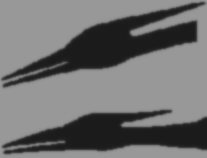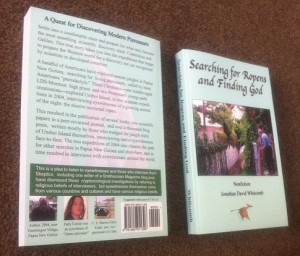For over ten years, I’ve received reports of strange flying creatures, reports that come from across the globe, from five continents. Less than 5% of all reports of apparent living pterosaurs show any obvious sign of a mental health issue. Yet many similarities in descriptions of these flying creatures suggest they are actual animals, seeming to be unlike any bird or bat known to Western science.
An early indication of non-insanity came from an email I got from a psychologist, Brian Hennessy, an Australian who has been working for years in China. It was not about any evaluation of the sanity of an eyewitness of a modern pterosaur: Mr. Hennessy himself was an eyewitness, reporting to me a “prehistoric” creature he saw flying in New Guinea in 1971.
Of course he did not immediately try to convince the world that he had encountered a giant pterodactyl, for the result would have been too predictable: The Western world does not response favorably to that kind of one-man proclamation, neither in 1971 nor today. Mr. Hennessy had no problem sharing his experience with me, however, and I am grateful for that.
.
Brian Hennessy, psychologist
In my nonfiction book Searching for Ropens and Finding God, I quote Hennessy (here quoted only in part):
“The creature I saw one early morning in Bougainville is etched in my memory. It was so unusual. . . . Firstly, it was very big (wingspan at least two metres, probably more . . . possibly much, much more). . . . It was black or dark brown. I had never seen anything like it before. It certainly looked prehistoric, in that it did not look like any other bird that I have seen before or since. Why prehistoric? Well, maybe my memory has been influenced by the intervening years, but I recall seeing this creature with a longish narrow tail . . . The body seemed to be quite narrow. However, the head was disproportionately large compared to the body (no feathers in sight).”
That sounds a lot like a ropen, with details that connect it with the sighting report from Duane Hodgkinson, who saw, many miles to the west of Hennessy’s sighting, and many years earlier, a dark-colored “pterodactyl” with a long tail. Both Hennessy and Hodgkinson reported a long horn-like appendage at the back of the creature’s head. Compare the composite sketches each man chose:

Hennessy chose the top image; Hodgkinson, the bottom
Mental health issues—that is a poor explanation for the reports given by those two men, especially in light of the reports of native eyewitnesses in Papua New Guinea: They too have seen ropens whose descriptions strongly suggest large Rhamphorhynchoid pterosaurs.
A Concern about Non-Craziness
If we have no need to doubt the sanity of eyewitnesses of flying creatures described like pterosaurs, why am I concerned about the subject of craziness? It’s those many ordinary persons who live in Western countries and have seen those creatures; that’s the problem: Not all of them seem to have had the clear thinking apparent in Hodgkinson and Hennessy, the ability to feel sure that they saw what they seem to have seen. Many other eyewitness, unfortunately, have doubted their own sanity because of countless years of Western indoctrination regarding extinctions of dinosaurs and similar creatures. This requires more quoting from Searching for Ropens and Finding God:
“I visited Mexico back in the late 1990’s. . . . [around the Sayulita area] I thought I saw a pterosaur. . . . I have been thinking I was crazy . . . now I think maybe I did see a pterosaur [after learning that other people had seen similar flying creatures].” [page 164]
“In the summer of 2009 I saw something that I didn’t quite understand, in the pinelands of New Jersey. . . . Since then until now, when I read your article, I thought I was crazy.” [I think the crazy feeling was before he read my article.]” [page 178]
Although the sales of my recently published book have been slow for several weeks, I am comforted to know that I have helped healthy persons to know that they are not crazy for seeing animals that are not “supposed” to exist. The problem, in my opinion, lies in extreme indoctrination into universal extinctions of general types of creatures.
###
.
Searching for Ropens and Finding God (third edition)
This flies high above a common true-life adventure, revealing the early stages of what may become the most unsettling scientific discovery since Copernicus and Galileo. It soars above disputes about religion, revealing why an official discovery of an extraordinary animal was delayed for so long. Above all, this explores human experiences—of eyewitnesses and those who interviewed them. People have become connected by common encounters: Persons of various faiths, with various levels of education, from various countries and cultures, have seen a living pterosaur. [first paragraph of title page]
BUY NOW on Amazon. This nonfiction book has been nicknamed “the Bible of modern pterosaurs.”
.




